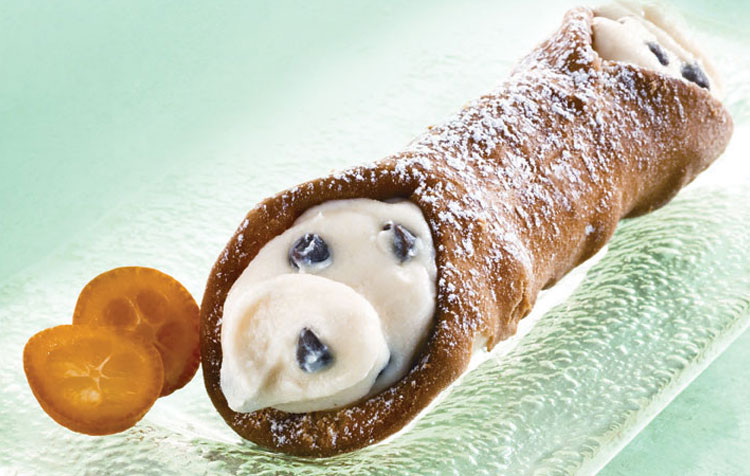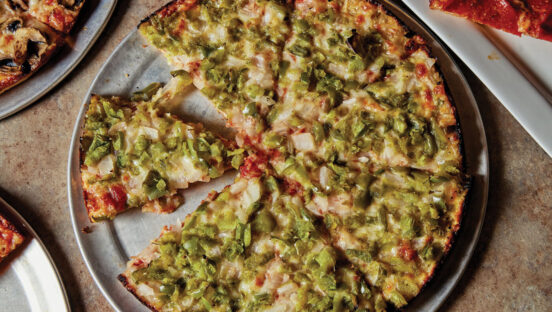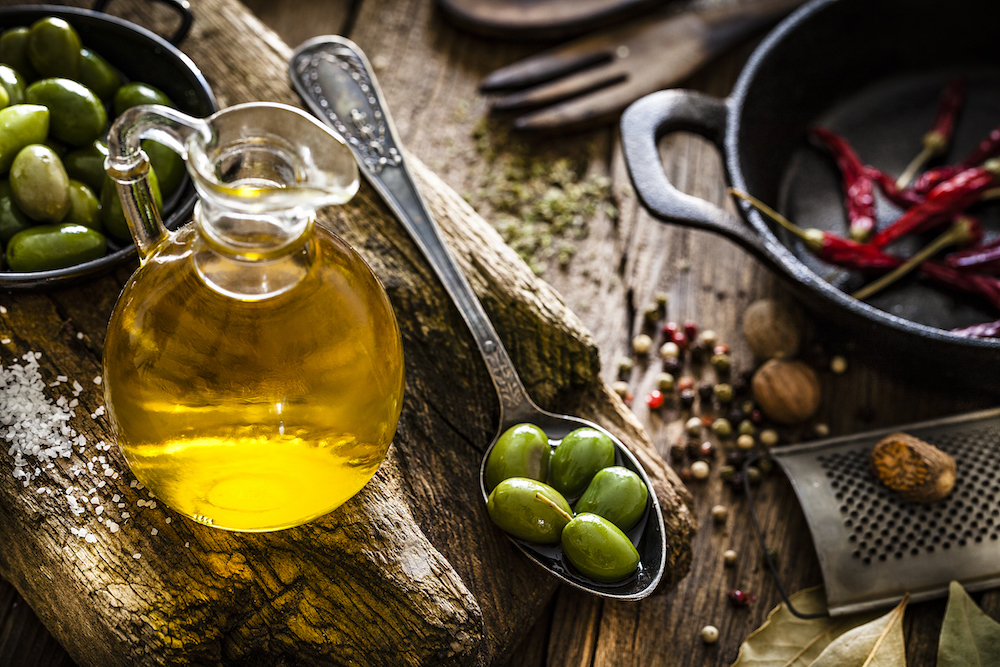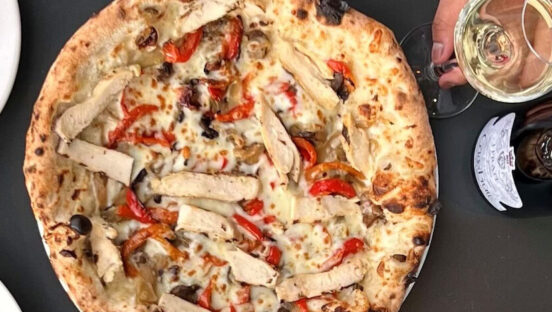The pie may be the centerpiece of the meal at a pizzeria, but the dessert is the grand finale, the perfect happy ending to an unforgettable dining experience. Finding the right selection of sellable sweets can be a challenge, but a strong dessert menu creates add-on opportunities that boost tips for the server as well as the business’ bottom line.
“Desserts are something that pizzeria operators bang their heads against the wall about,” says restaurant consultant Gregg Rapp, owner of Menu Technologies in Palm Springs, California. “It’s often hard to sell desserts in a pizzeria because people aren’t thinking about dessert after a big pizza. It’s easier to sell a salad than a dessert in the pizza world.”
But don’t get discouraged. According to Rapp, the key to engineering a great dessert menu is to carefully analyze your operation and ask some probing questions: What types of sweets will best complement your pizzas? What dessert options do customers expect from your type of store? Which is more cost-effective—housemade or packaged desserts?
For upscale pizza restaurants, a variety of indulgent, housemade treats, such as tiramisu or cheesecake, may be in order. For family eateries, a selection of kids’ favorites—including cinnamon sticks or dessert pizzas—can be a hit. And for operations focused mostly on takeout or delivery, small impulse items—including cookies and brownies—will often be successful when attractively wrapped and prominently displayed (either sold at the register or presented in an artfully arranged basket at the customer’s door by delivery drivers).
The Italian Classics
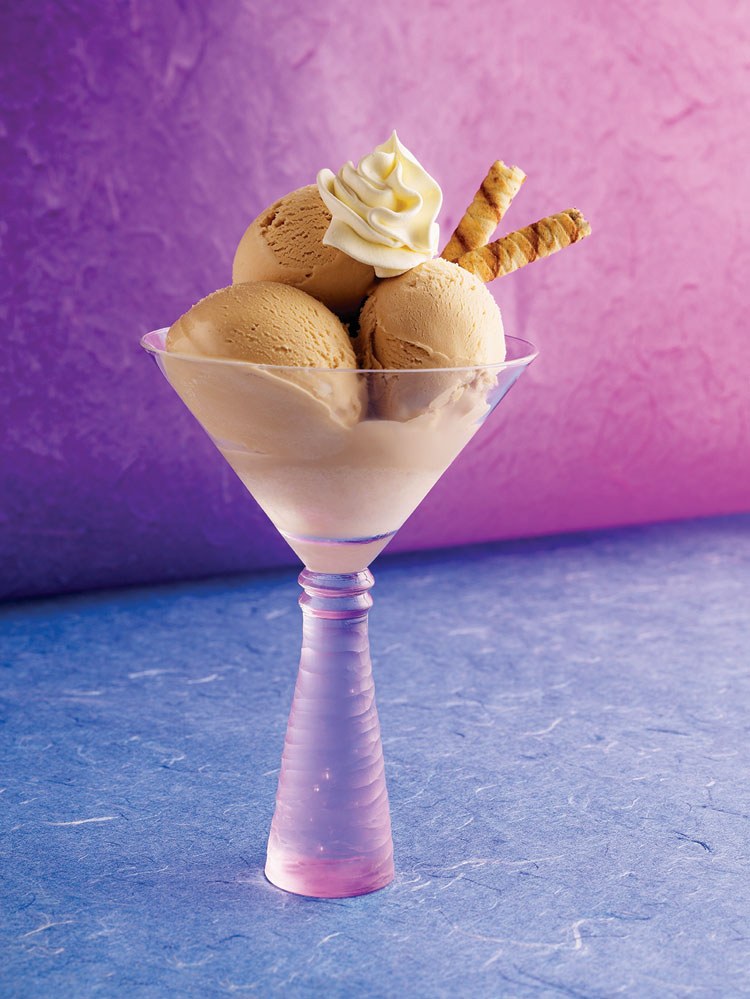 |
Classic Italian-style desserts, such as gelato and sorbetto, are hot trends in American pizzerias. Both make for cost-effective menu items, with a six-month shelf life and, for some brands, a 300% markup.
“Many people enjoy the fact that gelato is a healthier and ‘creamier’ version of ice cream,” says Carol Devine, vice president of marketing and communications for Taste It Presents in Kenilworth, New Jersey. “It has less air, which makes it smooth and creamy, and half the fat content of traditional ice cream—5% to 8% versus ice cream’s 15%. This makes gelato lower in calories, offering customers a lighter, healthier treat that they can enjoy throughout the year.”
Kelly Anne Kras from Stefano’s Gelato (stefanosgelato.com) in Lutz, Florida, concurs. “Gelato is the perfect dessert for any pizzeria,” she says. “Many pizzerias throughout the United States are experiencing incredible sales of gelato because it’s a healthier and lighter alternative to other desserts. Customers come in just for the gelato. When displayed properly, it has a beautiful presentation, and many people save room for it.”
Cannoli, the scrumptious cream-filled pastry dessert from Sicily, is another staple on many pizzeria menus. “Cannoli is a classic Italian comfort dessert that’s loved by customers of all ages, and it never goes out of style,” Devine notes. “It’s an easy-to-eat finger food that provides the perfect ending to a slice of pizza or other Italian entrée.”
Many high-end pizza restaurants sell their own housemade cannoli, but, according to Devine, the premade kind can be easily and affordably added to your menu without sacrificing flavor. “By maintaining the cream and shells separately, the operator can fill the shells whenever they are ordered, which not only gives cannoli a nice homemade touch, but makes it much fresher and avoids the potential for sogginess,” Devine says. “All you have to do is pipe and sprinkle with powdered sugar. It’s very simple.”
With eggs, sugar and heavily caffeinated espresso, tiramisu, one of Italy’s most popular sweets, literally means “pick-me-up” in Italian. “This smooth and delectable dessert is ideal for consumers looking for something light-tasting and elegant, yet not too sweet or too filling,” Devine says. Like cannoli, tiramisu can be prepared from scratch if your staff has the time and talent; otherwise, premade varieties abound and, with any luck, your guests won’t be able to tell the difference.
Sweet Profits
MOD Pizza (modpizza.com), a hip Seattle-based chain with a 1960s theme, has been making waves on the dessert scene for years with its groovily nostalgic sweet treats, says principal owner Charlotte Wayne. “Our desserts are all about the things that we love—great milkshakes, the classic retro Ding Dong that we all remember as kids, and our homemade cinnamon knots. We sell a lot of desserts—some locations more than others—so they definitely add to our check totals.”
Ding Dongs, a Hostess Brands confection, are an especially popular impulse item at Mod Pizza. “They sit at the till and get snatched up very often as last-minute add-ons,” Wayne says. “In some stores, our general managers will keep a supply in the freezer for those who are ‘in the know’ and request them. We also make Ding Dong towers for birthday celebrations in the store. The kids love them.”
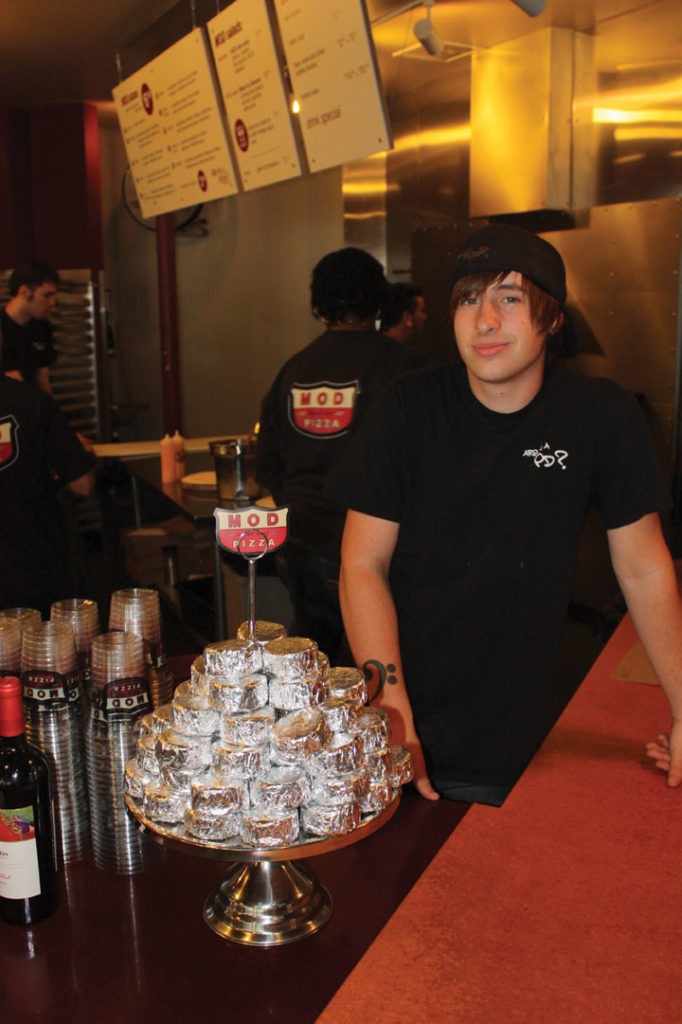 |
|
Dustin Ross shows off MOD Pizza's display of Hostess Ding Dongs, which are a big hit in keeping with the pizzeria's hip, retro theme. |
DeLucias Pizzeria (deluciaspizzeria.com), a family-style restaurant in Las Vegas, serves up several Italian-style favorites, including tiramisu, zeppole, cannoli and cheesecake, to profitable results. But DeLucias’ most popular offering, the Cinna-Pie, is more American than Italian and comes in regular, apple and cherry varieties. “We sell Cinna-Pies best when the dining room is full,” owner Candy DeLucia says. “All we have to do is cook one, and the smell will sell itself. But our best-sellers are the brownies. We leave a full basket on the counter and, right at the point of paying, customers will grab one and add it to the order.”
Desserts also generate higher ticket sales at Double Dave’s Pizzaworks (doubledaves.com) in Austin, Texas. “We try to build products out of our core ingredients, so our dessert pizzas, strudels and cinnamon sticks are made using the different kinds of pizza crusts we already have,” says CEO Chuck Thorpe. “But what you do with them makes a world of difference.” Deep-dish crust, for example, becomes “Cinnamonstyxz,” while hand-tossed crust yields a tasty cherry or apple strudel. And cookie dough and melted chocolate chips transform a crispy thin crust into chocolate chip pizza, Double Dave’s most popular dessert.
Housemade vs. Premade
With their heavenly aromas and tempting presentations, housemade signature desserts can draw in customers as effectively as a fresh, piping-hot pizza. But making desserts from scratch every single day requires a lot of work. “A homemade dessert includes your labor, so think about that—if you are going to make a cake, how much is the labor?” says Rapp. “If you don’t sell that many desserts, it’s probably better to buy premade because it’s cheaper than making them, especially in a smaller pizzeria.”
High-quality premade desserts offer the advantages of speed and convenience. “They are easy to store,” Devine points out. “You use only what you need and thaw them when you need them. But the well-made ones still offer fresh, homestyle taste and texture without the expense or labor of a pastry chef.”
Premade desserts—including tiramisu, mousse and some types of cakes—are often available in grab-and-go cup form for takeout and delivery. The convenience of to-go desserts creates a temptation that many sweet-toothed customers can’t resist—diets be darned, they’ll snag one when they pick up their order and vow to spend a little extra time in the gym the next day. And for operations that deal chiefly in delivery and takeout, Rapp suggests offering quarts of ice cream or other frozen treats that customers can dish out at home. “When you deliver a quart of ice cream, some people will call you because they want the ice cream, and then they’ll order a pizza to go along with it,” he says.
Lasting Impressions
Boosting your dessert sales starts with suggestive selling. “The more you ask for the sale, the more easily you’re going to get it,” Rapp advises. Always ask the customer if he would like to add a dessert to his order and make sure to share with him your full list of dessert options. If you offer online ordering, your website should direct visitors to the dessert menu or make suggestions before they check out, and dessert specials should be promoted—in both text and photographs—via social media outlets such as Facebook, Twitter and Pinterest. “My employees are required to ask if a dessert is needed when taking a delivery order,” DeLucia says. “Pictures on our website help a lot, too.”
Placing your sweets in front of the store also helps with the upsell. A display case with a selection of desserts grabs a guest’s attention as soon as he steps into your restaurant. The more exposure your sweets get throughout the restaurant, in fact, the better your sales will be. “We have window clings featuring our desserts and promote them on the menu board,” Thorpe says. “We train our servers and those who answer the phones to upsell. Some stores focus on one item for a month or so and will promote that item heavily during that period. And, for our lunch buffet, all of our desserts are put out so that guests have a chance to try them. That way, when they come back for dinner later, they may order that dessert that they liked so much.”
For those operators who are gearing up to launch a new dessert menu, Rapp recommends starting out with no more than five choices. “If you have more than five items in a category, people get overwhelmed, and they will default to what they know,” he says. “If you start with a few items and they are selling well, then consider expanding your dessert menu.”Indeed, a quick—and free—taste of a dessert such as gelato is worth a thousand words. “Have your servers give samples to customers and point out where the gelato case is located so they can explore other flavors,” Kras suggests. For help with creating displays for premade desserts, find out if your vendor offers point-of-sale materials, including appealing photography and flavor cards with mouthwatering descriptions.
Meanwhile, to get a clue about a customer’s inclination to order desserts, servers can pay attention to the type of pizza that he orders, Rapp advises. “When people order a signature pizza, you have a better opportunity to sell a dessert,” he says. His research also shows that, when a family spends a lot of time deciding which toppings to order, they probably aren’t thinking about other items, such as desserts.
“The most important thing to remember,” Devine says, “is that dessert is the last impression a pizzeria will make on a customer. Make sure it’s a favorable one.”
Dessert Suppliers
Aromi D’Italia, 877-435-2869, aromiditalia.com
Carpigiani, 800-648-4389, carpigianiusa.com
Dolcefine, 443-703-4055, dolcefine.com
Galaxy Desserts, 800-225-3523, galaxydesserts.com
Gelato Classico, 925-602-5400, gelatoclassico.com
Stefano’s Gelato, 888-316-1545, stefanosgelato.com
Taste It Presents, 908-241-9191, tasteitpresents.com



